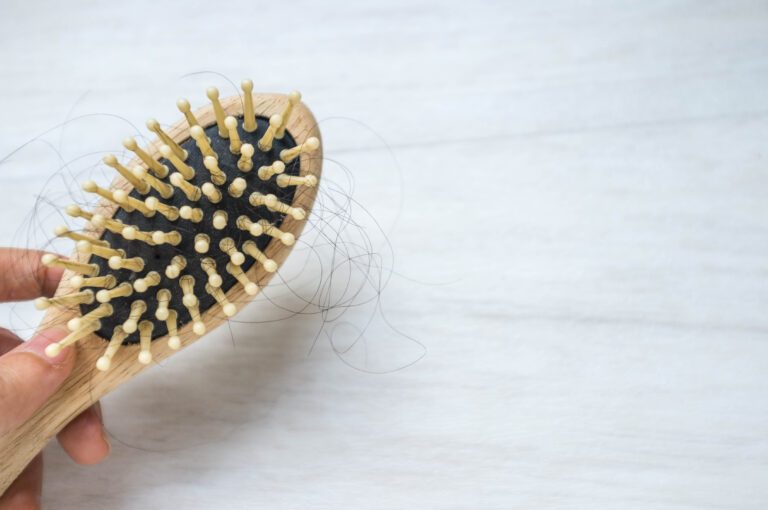FUE vs. FUT: Which Hair Transplant Method Is Best?
It goes without saying that healthy, vibrant hair can enhance your appearance. Unfortunately, however, most people face hereditary-pattern baldness as they age. Some people can even lose hair in their 20s!
That’s when hair transplant techniques, like FUE and FUT, come in handy, as they help you restore your youth. The question is this: which hair transplant method is best?
In this FUE vs. FUE guide, we’ll walk you through the differences and similarities between both hair procedures. We’ll also discuss how the surgeries work and their results to help you decide which operation is better for you. So, stick around!
What Is FUE Hair Transplant?
Follicular Unit Excision, or FUE, is one of two primary hair transplant procedures to treat male and female hair thinning as well as cover bald spots. The idea behind this technique is to collect natural hair sections, between one and four per graft, from a donor site on the scalp.
Harvesting separate hair follicles can be either manual or automatic. After extracting a sufficient amount of hair, the physician reinserts the follicles into the bald part of the head.
What Is FUT Hair Transplant?
Follicular Unit Transplantation (FUT), or the “strip harvesting method,” is a hair restoration technique that also involves removing hair from a donor site. Like FUE, FUT aims to create hair grafts that contain one to four strands.
However, instead of collecting hair follicles one at a time, the FUT technique harvests a skin strip from an area with sufficient hair growth. The surgeon then divides the hair-bearing strip into hair grafts and replants them into the patient’s head.
FUE vs. FUT: What Are the Differences?
Now that we have a general idea about both hair transplant procedures, let’s discuss their differences in further detail!
1) Procedure Cost
Typically, FUE is more expensive than FUT. The former method’s total cost can be between $8,000 and $50,000, with a price range of $4,000 to $15,000 per session. The latter hair transplant procedure costs between $7,000 and $10,000.
However, most centers charge per hair graft. FUE hair grafts cost $6 to $11, while FUT can be as low as $2.50 and may reach $7 per graft.
That said, how much either transplant surgery might cost you depends on several factors, including:
The Baldness Degree
The number of hair patches you need to cover bald spots determines the final cost. The more hair grafts you need, the pricier the procedure will be.
The Surgeon’s Skills
Both hair restoration surgeries require a qualified surgeon—even automated FUE does too. That’s why experienced doctors usually charge more, increasing the total cost of the procedure.
However, having to pay more for their services doesn’t always mean they’re a skilled surgeon. So do your research on the clinic before proceeding with the surgery.
Availability of Donor Hair Grafts
Ideally, the surgeon harvests hair from the back of your head. If the former solution isn’t enough to provide healthy hair grafts, your doctor will collect facial hair from your beard or chest.
The problem is that body hair is difficult to collect. As a result, the procedure becomes time-consuming, eventually increasing hair transplantation costs.
2) Operation Time
As you might have guessed, FUE takes more time and effort than FUT, which explains why the former procedure is costlier. But why?
Well, that has to do with the hair follicle harvesting step. As mentioned earlier, when performing an FUE hair transplant, the surgeon collects a single hair graft at a time. On the other hand, you get several hair grafts from a single hair-bearing strip.
For that reason, the follicle harvesting step doesn’t consume as much time in FUT as it does in FUE. So, what are the operation times for both hair transplant surgeries?
On average, an FUE session can last between 6 to 8 hours. However, if you’re planting more than 3500 grafts, the previous procedure will take two days.
As for FUT, it’ll take from 4 to 8 hours. In some cases, the surgery can last 12 hours. Still, it’s usually a one-day procedure.
That said, the overall procedure time may vary depending on the surgeon’s experience and the complexity of your case.
3) Pain
Usually, your doctor will use local anesthesia when performing hair transplant surgeries. Additionally, your surgeon will also give you sedatives to help you relax and block any pain.
So, you probably won’t feel any discomfort during the procedure. You might, however, feel some pressure and tugging. Still, your scalp will remain insensitive to pain as long as the anesthesia doesn’t wear off.
That said, post-procedure pain is a different story. Generally, FUT hurts more because the operation involves removing skin tissues from your head to obtain the hair-bearing stips. Plus, you’ll get stitches to close the wound.
On the other hand, FUE is minimally invasive, so you won’t feel much pain after the procedure. You’ll feel some tenderness in your head for about one day, but that’s about it. As for FUT, the discomfort can last for three days before disappearing.
4) Healing Time
Healing time will vary from one individual to another. Generally though, complete recovery from FUE takes around 14 days. Your scalp will start to heal within the first few days, and after around a week, the redness and swelling will start fading.
As you might have expected, FUT healing period is longer than FUE. Full recovery from FUT can take around five weeks.
However, you’ll usually return to your daily activities after 7-12 days. Meanwhile, your doctor might prescribe pain medications to help ease the scalp soreness.
5) Success Rate and Final Results
Generally, both procedures have a high success rate of around 90% and above. However, FUT tends to be more successful at implanting large numbers of grafts.
That’s because the strip harvesting technique can yield a large number of hair follicles, unlike FUE. The latter procedure is suitable within the 3500-4000 hair graft range.
Additionally, FUT usually allows for better coverage and fullness. However, you’ll have one long scar on the back of your head. Unfortunately, the scar can be visible when you wear short hair.
FUE, on the other hand, gives you natural hair results with minimal scarring. So, you can confidently keep your hair short.
That said, with the proper care, both surgeries’ results can last a lifetime.
FUE vs. FUT: How Are They Similar?
Extracting hair follicles from donor areas and covering bald sites are the main similarities between FUE and FUT. Aside from the procedure steps, both operations have an age requirement.
As a rule of thumb, patients must be at least 25 years old before considering a hair transplant surgery. However, the ideal age would be 30 years old or older.
So, why shouldn’t young people get hair transplant surgery? Well, that’s because patients in their early 20s or younger usually continue to lose hair. Consequently, they haven’t fully developed their hair loss pattern yet.
That’s why getting a hair transplant at a young age seems counterproductive.
What’s more, you can combine the former two surgeries with scalp micro-pigmentation treatment to enhance hair transplant results.
What Is Scalp Micropigmentation?
Scalp micropigmentation is a simple, non-invasive, yet effective hair restoration procedure. As the name implies, the operation involves tattooing your head to cover the bald spots. The pigmentation resembles the hair follicle.
This procedure is a great solution for covering the scars you get from a FUT hair transplant. It can also give the illusion of high hair density. So, you can wear short hair with confidence since the scars and the slight thinning at the donor site are camouflaged with pigment.
That said, scalp micro-pigmentation lasts around 4-6 years. In some cases, it can reach eight years. Still, the color will fade away over time since the skin exfoliates itself. So, you’ll need some retouching with this procedure.
How Does FUE Hair Transplant Work?
Here’s a step-by-step guide to the FUE procedure:
Step 1: Marking the Donor Sites
Before this step, the doctor usually takes pictures from different angles of your head. That helps assess the degree of hair loss and shows you the hair transplant progression.
In most hair transplants, the doctor will mark the back and side parts of the scalp as the donor sites, and all for good reasons.
For one, most men have sufficient hair in those areas thanks to genetics.
You see, dihydrotestosterone (DHT), a byproduct of testosterone, is behind the male pattern baldness. Some hair follicles are sensitive to the former hormone. They shrink over time and eventually stop producing hair altogether.
The good news is that hair on the sides and back of the head isn’t affected by DHT. For that reason, men usually don’t lose hair from those areas.
Plus, even when the surgeon harvests from the donor area, you can rest assured that the remaining hair follicles will continue to grow. So, you won’t end up with weird bald patterns at the donor site after the hair transplant.
Step 2: Extracting Hair Follicles
Harvesting hair follicles is the primary difference between FUE and FUT techniques. As mentioned earlier, the doctor extracts hair follicles either manually or using automated tools. So, what’s the difference?
Manual FUE
In manual FUE, the surgeon uses punches, a small surgical instrument. The former tool has a cylindrical edge with a diameter of 0.8 to 1.1 mm. That allows the micro-punches to do a circular cut around the hair follicle. Then, using fine forceps, the doctor extracts the graft.
The above process continues until your doctor reaches the desired follicular number. That’s usually between 1000 and 2000 hair grafts per hair session.
ARTAS FUE
Automated FUE, like ARTAS, on the other hand, is much better than hand-operated FUE.
Robotic hair transplants are more precise, as they use sophisticated algorithms to assess the quality of each hair follicle. As a result, the extracted hair is of high quality, producing better results. Not to mention, it’s less time-consuming.
So, not only does the former procedure offer fewer chances of follicular destruction during harvesting, but it also ensures the collected hair doesn’t stay outside the body for a long time.
In general, hair grafts can survive for around 6 hours outside the body when kept at low temperatures. After that, the extracted hair follicles’ survival rate starts decreasing—even when preserved at cold temperatures.
Because it shaves hours off the procedure, ARTAS is better than hand-operated FUE for complex hair transplants that span several days.
Step 3: Preparing and Storing Hair Grafts
After extracting hair, assistants inspect the follicle under a microscope for a couple of reasons.
For one, they remove excess tissue from the grafts to refine them. Additionally, the assistants inspect hair follicles to ensure the grafts have minimal trauma from harvesting.
The above process is repeated for each hair graft immediately after its removal. Then, the assistants place the follicle in a preserving solution.
Step 4: Implanting Follicular Units
This step depends more on the artistic side of the doctor since it affects the final results of the hair transplant surgery. A skilled doctor implants the hair grafts in the recipient area to mimic a natural hairline—even with limited donor hair.
The surgeon starts by applying local anesthesia. Then, using a 1 mm needle, the doctor makes small incisions to insert the hair grafts. The depth of the cut corresponds to the follicular unit length.
After making the micro-openings in the scalp, the surgeon places the hair grafts in the recipient area using implanters. The previous procedure is repeated until the doctor implants all of the harvested hair grafts.
How Does FUT Hair Transplant Work?
Generally, FUT follows a similar sequence as FUE. The doctor starts by taking pictures and marking the donor and recipient areas. Then, the surgeon estimates the number of hair grafts needed to cover the baldness.
The difference is in the harvesting techniques. Here’s how surgeons perform the former steps in FUT:
Strip Harvesting Hair Follicles
As mentioned earlier, in FUT, the surgeon removes an entire hair-bearing skin patch from the donor site, which is usually the back of the head.
The doctor starts by applying anesthesia to the treated area. After calculating the hair density of the donor area with a phototrichogram, the surgeon determines the strip dimensions.
Using a blade, the doctor marks the dimensions of the strip, making a 2 mm-deep cut. That depth ensures the cut is superficial and that no active bleeding occurs.
Then, the surgeon penetrates the incision site using the Haber spreader, skin hooks, or the sharp scissors technique. The latter method is ideal for achieving less-damaging cuts in the hair. Following the strip removal, the doctor stitches the wound.
Later on, the assistant dissects the skin strip under the microscope into follicular units, a process known as slivering. The procedure then follows the same steps in graft preparation, storage, and implantation as the FUE surgery.
FUE vs. FUT: Which Is the Best Hair Transplant?
Both techniques have advantages and disadvantages. FUE hair surgery costs more and generally takes more time than FUT. It also isn’t the best option for patients with significant balding or those looking for maximum hair coverage.
However, FUE leaves minimal scarring and has a faster recovery time. Plus, it isn’t as painful as the FUT procedure.
On the other hand, FUT is suitable for large hair follicular implants—usually more than 5000 hair grafts. Plus, it’s possible to get an additional FUT or FUE surgery after your first FUT procedure.
Conversely, following an FUE procedure with a FUT surgery might be tricky. However, the latter operation leaves a linear scar on the back of your head.
So, in the end, it’s up to your surgeon’s suggestion and your preference to determine which hair transplant is better for you.
Wrapping Up
Comparing FUE vs. FUT hair transplant surgeries can help you decide on the best procedure for you. Both operations have several differences, like operation time, cost, healing period, and pain during and after treatment.
FUE and FUT also differ in their success rates. While both procedures have up to a 90% success rate, FUT guarantees better results for large amounts of grafting.
Whichever surgery you choose, you’ll end up having a head full of hair for a long time!







